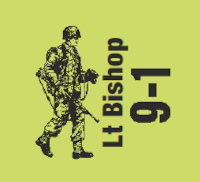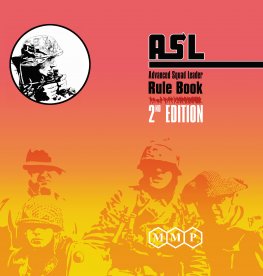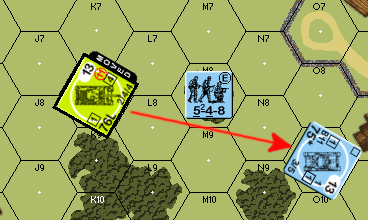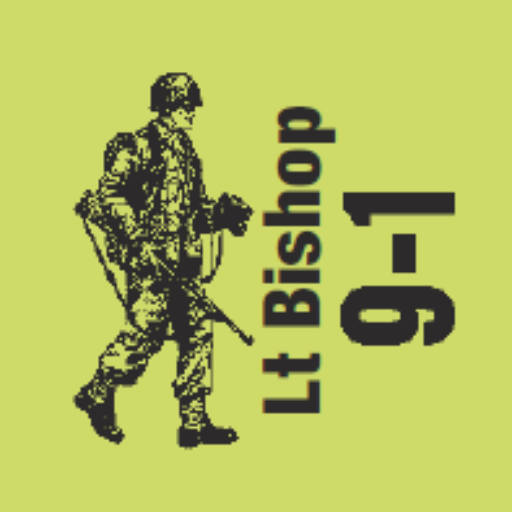
This article stems from a discussion that took place on my blog. A reader was trying to understand how and when a vehicle could Intensive Fire during its MPh. While the discussion was short, the implications of the question continued to puzzle me for a while. I had a discussion with my friend, and he and I both believed there was an unintended conflict between the rules and Q&A. Let’s look at the rules and see how they introduce a small conflict and a new Perry Sez which addresses the conflict.
Keep in mind, this article will only deal with a vehicle’s MPh. There are other capabilities, such as firing the MA in both a vehicle’s MPh and its AFPh, but I will not cover these here.
Rules Dive

The first rule in question is D3.5. In part, it reads “Non-CC vehicular MG fire is limited to the same fire phase (A.15) as the vehicle’s other weapons or that of its PRC; if any weapon is fired from a vehicle, the remaining weapons must fire in the same phase or forfeit their non-CC fire attack opportunity for that Player Turn [EXC: Bounding (First) Fire; 3.31-.32].”
Next, we have to consider D3.51. It reads “Once any vehicular weapon fires, its other weapons may fire in that phase only from that same hex [EXC: OVR; and MA keeping a Multiple ROF may fire again from another hex if the previous shot(s) were Bounding First Fire].” Here, it is important to note the two exceptions to this limitation, Over Run (OVR) and an MA keeping ROF. It is also worth noting that this limitation applies to any PRC capable of firing from the vehicle.
Taken together, if any weapon/PRC fires in hex A, all weapons must fire from hex A EXCEPT for MAs keeping ROF or a vehicle conducting a second (or more) OVRs.
Question and Answer Dive
Next, we must consider the applicable Q&A. For this, we have two pertinent to the discussion:
Q&A 1 — C5.6, D3.3, & D3.51
In a Friendly Mph, can a vehicular MA fires using Bounding First Fire, loses its rate of fire, move to another hex and then intensive fire?
A. No.
Q&A 2 — C5.6, D3.3, & D3.51
In its MPh, an AFV Fires its MA and loses rate. It also fires all of its MGs from the same Location in accordance with D3.51. May the AFV declare an Intensive Fire (IF) shot? If so, may that IF shot be used to fulfill the EXC in the last sentence of D3.51 and fire that IF shot in another hex or would the IF shot limited to the Location which it has already fired from?
A. Yes. Limited. (That is, you can IF in BFF but not from a different hex.)
These two Q&A interact with the rules in an unpredictable way. The first says IF must take place in the hex the MA loses ROF in. The second says IF is not a form of ROF. So what does this mean?
Example One

Assume the AFV has moved into hex J8 and fired one of the MGs. It MUST now fire all of its weapons from this hex or forgo their usage in the MPh. Assume the AFV fires all its weapons and exhausts ROF. If it has remaining MPs, it could elect to spend one MP in Delay and Intensive Fire from this same Location. Both the rules and Q&A supported this conclusion.
Example Two

Assume the AFV maintained ROF in the previous example. Per D3.51, the AFV may move to hex K8 and fire the MA again in this new Location. Assume it does so, and this time loses ROF. What does this mean for its IF capability?
Per D3.51, only ROF and OVR can be used in a second hex. Intensive Fire is not one of those exceptions. This suggests the only place an AFV can use IF would be in the original hex it fired from (hex J8). But Q&A 1 limits the ability of an AFV to move to a new hex and IF. Q&A 2 leaves open the possibility an AFV could IF from the second hex, but it doesn’t address the concept of moving to hex K8 and firing again and seems to only reinforce what we already know from D3.51. Q&A 2 seems to suggest you could IF from hex K8, but it doesn’t state that plainly and doesn’t say IF is ROF. Still, Q&A 2 seems to imply it is possible.
New Q&A

Based on conversation with my friend and the inconsistencies, I asked a new Q&A and received an answer from Perry.
Q&A 3 — D3.51
Imagine an AFV moves to hex A and B1F’s the MA and maintains ROF. Now it moves to hex B and fires the MA and loses ROF. Per Q&A, it cannot move back to hex A and fire and per D3.51, it can only fire ROF in a new hex. Per Q&A, IF is not ROF. Taken as a whole, this leaves the AFV with no IF options. With this background:
- Is no Intensive Fire the intended outcome in such a situation?
- If not, is it better said that a vehicle could IF in the Location in which it lost ROF?
- Does firing the MG’s change any of this? It is accepted that the MGs still must be fired in hex A per D3.51
A: A vehicle can keep ROF, move, shoot and lose ROF, and then Intensive Fire from the second hex, but cannot move again and Intensive Fire. Whether the MG were fired from the very first hex (the only one possible) is not a factor. Don’t see this as conflicting with the prior two Q&A.

This third Q&A and clears this up nicely. It also makes Perry’s intent with Q&A 2 very clear. Summed up succinctly, an AFV may Intensive Fire the MA in the hex it loses ROF in provided it has enough remaining MPs to do so. With this in mind, the AFV in the example CAN move to K8, fire the MA losing ROF, and then fire an IF shot.
Conclusion
I have written on this topic before. I briefly reviewed this original article and I don’t think anything changes in the article. There is a discussion at the bottom of that article which led to this post. Portions of that discussion have been superseded by this new Q&A.
It is entirely possible the conflict was one of my making. Q&A 2 seems to imply the same outcome as Q&A 3 even with the nagging limitation noted in D3.51. Still, I felt the question worth seeking clarity on and I am now passing on the response here. This will also appear in the next update of Klas’ Q&A collection on his website.
For those as confused by all of this as I was, I hope this provides some clarification. For those who are scratching their head wondering what I was thinking, I hope this hasn’t confused the matter for you. Until next time. – jim


The discussion leading to this article is on the bottom of this post here: https://jekl.com/2021/10/06/mechanics-of-bounding-first-fire/. Some of the answers provided at the bottom of this post are superseded by this new Q&A.